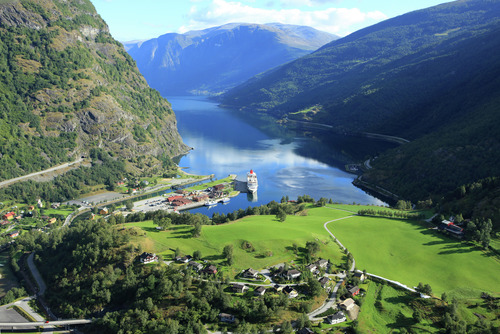 When we think about Norway, we see, above all, extensive, charming fjords – dark rocks strongly contrasting with the foaming sea. The fabulous scenery of the west coast is breathtaking. Norwegian fjords are considered the most beautiful in the world for a reason. High, The steep slopes of the waterfront stretching for hundreds of kilometers attract people who want to be close to wild nature. Most fjords have numerous branches, which only adds to their charm. By following their winding paths, we can admire the wonderful, sweeping views Start your trip in the beautiful Sognefjorden Bay, north of Bergen – the largest fjord in the world.
When we think about Norway, we see, above all, extensive, charming fjords – dark rocks strongly contrasting with the foaming sea. The fabulous scenery of the west coast is breathtaking. Norwegian fjords are considered the most beautiful in the world for a reason. High, The steep slopes of the waterfront stretching for hundreds of kilometers attract people who want to be close to wild nature. Most fjords have numerous branches, which only adds to their charm. By following their winding paths, we can admire the wonderful, sweeping views Start your trip in the beautiful Sognefjorden Bay, north of Bergen – the largest fjord in the world.
A reminder of the ice age.
Fjords are strange creations of nature. These are sea bays with irregular steep, rocky slopes extending far into the mainland. They are often very narrow, long, branched and deep. The fjords are left over from the Ice Age, that is, the Pleistocene. During the last ice age, Norway was covered by an ice sheet. Mighty ice tongues moved slowly towards the sea, carving very deep valleys in the bedrock ,.U-shaped”. The fjords were created as a result of the flooding of the lower parts of these grooves by sea waters (valleys). After the ice sheets and Pleistocene glaciers melted, the sea level rose on average by 50-100 m and flooding of coastal areas.
The mighty walls of the Sognefjorden dip above 1300 m under the water and rise above 600 m above its surface. The flat cut rocks form a picturesque plain. This amazing bay has 206 km long, and at the same time 1,5 do 6 km wide It is a real miracle of nature with unique shapes- The Sognefjorden has many branches – northern Fjaerlandsfjonden, Sogndalsfjorden in Lustrafjorden, eastern and southern Laerdalsfjorden, Aurlandsfjorden, and also Naroyfjorden.
